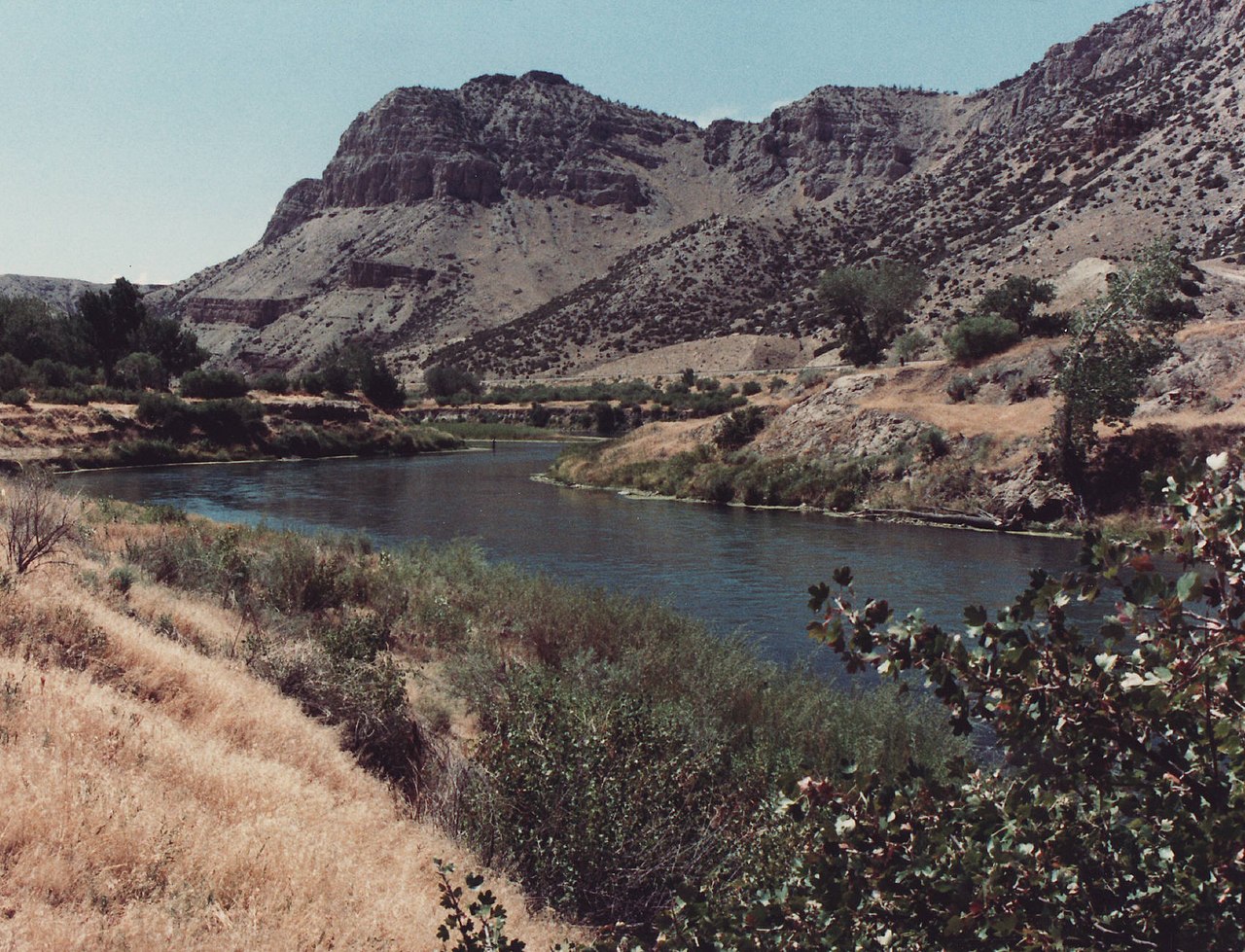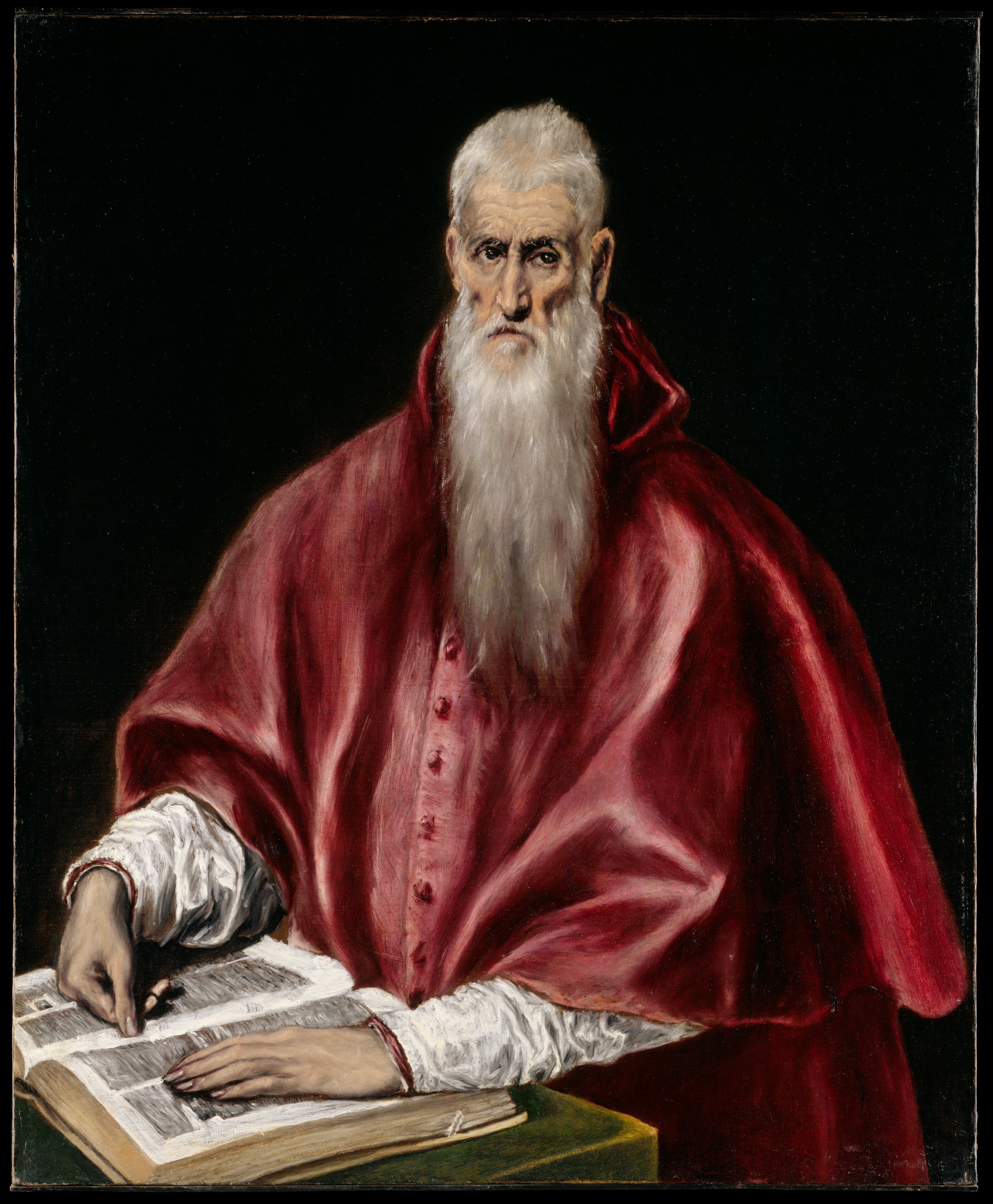
“The Wind River … Indian Reservation, Wyoming,” where Father Roberts preached…
* * * *
Tuesday, February 24, 2015, is the Feast of St. Matthias, the Apostle who came “after” Judas:
[A]ccording to the Acts of the Apostles, [he] was the apostle chosen by the remaining eleven apostles to replace Judas Iscariot following Judas’ betrayal of Jesus and suicide. His calling as an apostle is unique in that his appointment was not made personally by Jesus, who had already ascended to heaven, and, it was made before the descent of the Holy Spirit upon the early Church.
See Saint Matthias – Wikipedia. Note also that this St. Matthias is not to be confused with St. Matthew, the Gospel-writer whose Feast Day is September 21.
Or for that matter Mattathias, who rebelled against the occupying power before Rome, just before Jesus. In turn he fathered Judas Maccabeus, the greatest guerrilla in Jewish history.
But we digress…
We were talking about St. Matthias, also known as “Unremarkable Matthias” or the “Overlooked Apostle.” See Feast | First Things and The Overlooked Holy Apostle, Matthias.
Isaac Asimov gave a pithy description of how this Matthias became an Apostle:
Peter arranged to have a new individual selected to take the place of Judas Iscariot in order to bring the number of the inner circle back to the mystical twelve that matched the twelve tribes of Israel. Two were nominated, Joseph Barsabbas and Matthias. To choose between the two, lots were used: Acts 1:26…. and the lot fell upon Matthias; and he was numbered with the eleven apostles. Neither Joseph Barsabbas nor Matthias are mentioned anywhere else in the New Testament.
(Asimov, 998) The problem is there are few if any images available – pictures or paintings – of St. Matthias. So to get a lead-in and lower image for this post, I had to check the church calendar. I found a “trial” Feast – February 25 – for Reverend John Roberts (1853-1949).
There’s more about “Father Roberts” below, but first some points about St. Mattathias.
As noted in St. Matthias – Wikipedia, some scholars think he’s really someone else:
Eusebius calls him … not Matthias but “Tolmai,” not to be confused with Bartholomew (which means Son of Tolmai) who was originally one of the twelve Apostles; Clement of Alexandria says some identified him with Zacchaeus; the Clementine Recognitions identify him with Barnabas; Hilgenfeld thinks he is the same as Nathanael in the Gospel of John.
Another site said Peter and the other apostles studied Old Testament Scripture and “found a prophecy of Judas’ betrayal in Psalms 69 and 109.” (As I wrote back in October 2014, “It pays to know the psalms!” See also Jesus and the Psalms – Ligonier Ministries.) Further, “the prophecy in Psalm 109 included the instruction, ‘let another take his office.’” See Feast | First Things, which added, “We too, should search the Scriptures [especially the Psalms] to find God’s will…”
The Overlooked Holy Apostle agreed that “Matthias was originally Zacchaeus. Zacchaeus climbed the sycamore tree because he could not see Jesus due to the crowd of people and his short stature (Luke 19:1-10). He repented of his former life after meeting the Lord.” This site included a gruesome account of St. Matthias preaching in a city of “man-eaters” – cannibals – and of the trials and tribulations he suffered there. (See also Zacchaeus – Wikipedia.)
So whether St. Matthias died by being first stoned and then beheaded, or had his eyes gouged out and then “sat for thirty days waiting to be eaten and die,” the point is this: spreading the Gospel isn’t always a whole lot of fun. Which brings up a more recent “Gospel spreader” who had a bit more luck, the Reverend John Roberts, “Father Roberts.”
As Wikipedia noted, “John Roberts [1853-1949] is honored with a feast day on the liturgical calendar of the Episcopal Church on 25 February.” See John Roberts (missionary), which noted he was born in “north Wales” but grew up yearning to be a missionary. His first mission was to the Bahamas, but among people who “were already Christian.” He wanted “greater challenges, particularly among American Indians,” and was eventually sent to the Diocese of Colorado and Wyoming. He asked “for missionary work in the diocese’s most difficult field.”
The site John Roberts, Missionary to the Eastern Shoshone, added some interesting footnotes.
For one thing, there was his memorable eight-day trip out to the Wind River Reservation: “He took the train to Green River and then traveled the last 150 miles by stage. This journey came in the midst of a blizzard with temperatures nearing 60 degrees below zero.” (E.A.)
Another note addressed Father Roberts’ befriending Chief Washakie of the Shoshone:
The chief’s son, Jim Washakie, was shot and killed in 1885 by a white man in an argument over a liquor purchase. When Chief Washakie heard of this, he became distraught and vowed to kill every white man he saw until he himself was dead. When Roberts heard of this, he … offered his own life instead. Washakie reconsidered and said, “I do not want your life. But I want to know what it is that gives you more courage than I have.” Roberts used the occasion to talk about his personal faith and converted Washakie to Christianity. (E.A.)
Which brings up the work of missionaries in general. One definition said a missionary is a “member of a religious group sent into an area to do evangelism or ministries of service, such as education, literacy, social justice, health care and economic development.” Certainly the last five “ministries of service” have the potential for much good. On the other hand there are concerns “that missionaries have a perceived lack of respect for other cultures.” And there is the “potential destruction of social structure among the converts.” See Wikipedia.
Other web articles are more blunt, saying missionaries in the past have attacked native spiritual ceremonies as “pagan,” adding that among “uncivilised people,” missionaries are “agents of destruction.” And some say missionaries have destroyed the “bonds of the people to the forests, land and animals,” and spread ideologies and technologies that make native people “slaves to the extractive system which defines colonialism.” See e.g. Against Missionaries, A Case Against Missionaries, and/or Do Missions Destroy Culture? | RELEVANT Magazine.
On the other hand, see John Roberts, Priest, 1949 | Commission on Liturgy and Music:
Unlike other missionaries who sought to change the culture and lifestyle of Native peoples … Roberts believed it was important to preserve the language, customs, and culture of the people. Roberts sought to honor and respect the ancient ways of the Native peoples while at the same time proclaiming the Gospel among them, inviting them to faith, establishing congregations, and serving their needs in the name of Jesus. (E.A.)
In this case – it seems – Father Roberts is one missionary who got it right. He got to know the people he’d be ministering to, and he “learned their language.” Here’s to his Feast Day.
* * * *

“…never take me away from my Indians”
* * * *
The upper image is courtesy of the link, Wind River Indian Reservation, contained within John Roberts (missionary) – Wikipedia.
The lower image is courtesy of The Reverend John Roberts, Missionary to the Eastern Shoshone and Northern Arapaho Tribes. The caption: “‘I hope you will never take me away from my Indians,’ the Reverend John Roberts told his bishop.”
Re: “Mattathias.” This Mattathias – who died in 165 BC – was “a Jewish priest whose role in the Jewish revolt against the Syrian Greeks is related in the Books of the Maccabees.” See Mattathias, which said he was perhaps best known for fathering Judas Maccabeus, who in turn is best known for being a leader of the Maccabean Revolt. In that revolt – from 167 to 160 BC – Judas (or Judah) Maccabee “led an army of Jewish dissidents to victory over the Seleucid dynasty in guerrilla warfare.” See Wikipedia, the free encyclopedia, which noted that the “Jewish festival of Hanukkah celebrates the re-dedication of the Temple following Judah Maccabee’s victory…”
Re: Isaac Asimov. The quote is from Asimov’s Guide to the Bible (Two Volumes in One), Avenel Books (1981), at page 998. Asimov (1920-1992) was “an American author and professor of biochemistry at Boston University, best known for his works of science fiction and for his popular science books. Asimov was one of the most prolific writers of all time, having written or edited more than 500 books and an estimated 90,000 letters and postcards.” His list of books included those on “astronomy, mathematics, the Bible, William Shakespeare’s writing, and chemistry.” He was a long-time member of Mensa, “albeit reluctantly; he described some members of that organization as ‘brain-proud and aggressive about their IQs.’” See Isaac Asimov – Wikipedia.
Re: Father Roberts’ “personal faith.” In other words he was “singing his song,” not a warmed-over rehash. (He was not a “carbon copy Christian.”) See e.g. “Another brick in the wall.”
For more on Father Roberts, see also John Roberts – Satucket.com:
Assigned to minister to the Shoshone and Arapahos on the Wind River Reservation, he set about his work by learning all he could about Native American customs and beliefs, believing that by knowing the people he hoped to minister to he would be more effective. He also learned the native languages, eventually translating the gospel for his Native American congregates… His translation of the Gospel of Luke into Arapahoe is online at Project Gutenberg. Translations of the Lord’s Prayer, Apostles’ Creed, Ten Commandments, etc., into Arapaho and Shoshone are also online.
For another blog-post on Father Roberts, see The Good Heart: The Rev. John Roberts (1853 – 1949).
* * * *


 Jesus, tempted in the wilderness during His own “40 days…”
Jesus, tempted in the wilderness during His own “40 days…” 






